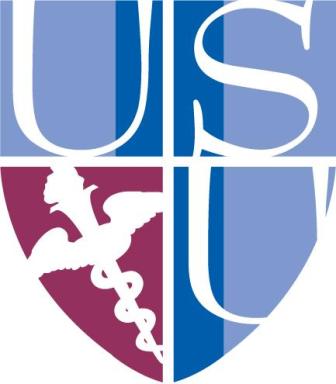USU Researchers Break New Ground in Prostate Cancer Battle
Marqeis Sparks
|
Health.mil
July 22, 2010
A recent medical breakthrough has opened new opportunities in clinical evaluation of prostate cancer worldwide, as military researchers have developed a new process that may lead to earlier detection of the disease, according to officials.
Dr. Shiv Srivastava, co-director of the Uniformed Services University’s Center for Prostate Disease Research (CPDR) and CPDR Director Col. (Dr.) David G. McLeod recently collaborated with a team of researchers and investigators from the Armed Forces Institute of Pathology and Walter Reed Army Medical Center to develop a highly specific assay, or analysis, for the detection of the ERG oncoprotein, which is regulated by prevalent gene fusions present in over half of all prostate cancers.
 Their findings, which were reported in the advanced online publication of Prostate Cancer and Prostatic Diseases (Nature Publishing Group, June 29), found that the ERG oncoprotein is over-expressed specifically in tumors of two thirds of prostate cancer patients, it can be detected, and it is believed that it is a causal cancer-gene defect.
Their findings, which were reported in the advanced online publication of Prostate Cancer and Prostatic Diseases (Nature Publishing Group, June 29), found that the ERG oncoprotein is over-expressed specifically in tumors of two thirds of prostate cancer patients, it can be detected, and it is believed that it is a causal cancer-gene defect.
“We are excited about the potential of streamlining the detection of ERG oncoprotein in clinical specimens,” said Srivastava, who is also the scientific director of CPDR, and a professor in the Department of Surgery at USU.
“Some other cancer gene defects in combination with ERG defect may make cancer more aggressive and we are pursuing this line of investigation, now that we have an assay to reliably detect ERG oncoprotein in tumor specimens,” he said.
Researchers are now are able to identify the presence of the ERG oncoprotein with close to 100 percent accuracy in the prostatic tissues of men who have prostate cancer. The team established the selective presence of ERG in malignant cells and the virtual absence of ERG in normal cells. Early detection of prostate cancer can save and improve the quality of lives for those patients who suffer from the disease.
More in-depth research is a work in progress says Srivastava, however CPDR researchers have actively studied biology, biomarker and therapeutic utility of ERG alterations in prostate cancer since their original discovery of the frequent ERG over-expression in nearly two-thirds of all prostate cancer patients more than five years ago.
The ERG-protein-based test represents one of the new and more specific ways of looking at prostate cancer and provides an incremental advance in the right directions to resolve some of the key issues faced in prostate cancer diagnosis and treatment field. The team hopes to be able to administer an easier yet equally efficient ERG urine test in the near future.
“It may also be possible to stratify patients based on ERG for a specific type of current treatments and/or develop less invasive ERG-targeted drug therapy in place of surgery or radiation for more than half of patients,” said Srivastava. “We hope more usage of this assay will lead to enhancing at least one aspect of prostate diagnosis.”
Health Care [News]
|
research
USU
Return to News Stories